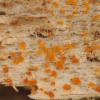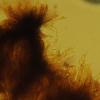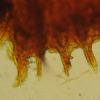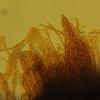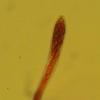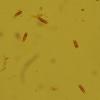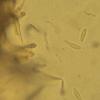
20-12-2025 23:08
Patrice TANCHAUDBonsoir, récolte sur sol sablonneux dans l'arri�

20-12-2025 15:47
Mirek GrycHi.These grew on pine wood that was heavily covere

18-12-2025 21:17
Pol DebaenstThe identification took me to Byssonectria deformi

15-12-2025 07:09
 Danny Newman
Danny Newman
indet. Rutstroemiaceae sp. on unk. fallen leavesMc

19-12-2025 10:10
Patrice TANCHAUDBonjour, récolte réalisée en milieu dunaire, a

18-12-2025 17:23
 Bruno Coué
Bruno Coué
Bonjour,je serais heureux d'avoir votre avis sur c

18-12-2025 18:07
Margot en Geert VullingsThese plumes were found on rotten wood.They strong

17-12-2025 18:35
 Michel Hairaud
Michel Hairaud
Bonjour à tous/Hi to everyone I am passing along
 Bonjour,
Bonjour,C'est mon premier message sur le forum. J'ai fait cette observation le 11 avril dernier. En utilisant la clé de Korf (1951), j'arrive à Arachnopeziza trabinelloides. Je n'ai jamais observé de spores à 2 ou 3 septa comme chez A. cornuta. Qu'en pensez-vous? Merci beaucoup pour votre aide!
Cordialement
Arold
Description :
Subiculum présent; blanc
Apothécie : largeur 0,1 – 0,4 mm; orange vif; présence de poils
Asque : largeur 5,2 – 7,8 um; longueur 52,5 – 65,6 um; octosporé; pore apical devenant bleu en ajoutant de l'iode
Spore : longueur 13,1 – 15,7 um; largeur 2,9 – 5,2 um; 1 septa (parfois 0); amincie à une extrémité; hyalin
Paraphyse septées, simple ou branchue
Substrat : Bois en décompostion d'une souche de hêtre (Fagus grandifolia)
Habitat : Érablière à hêtre mature
Lieu : Grande région de Montréal, Québec, Canada.

I think you are right with your idea. Only your photos are very small (did you use oil immersion?), so difficult to interpret. I assume you reduced them?
Zotto

Which part of the specimen do you need to see? I can take some bigger pictures (but maximum on this forum is 150 ko, so yes, I reduced them...).
I have a second question. Do you know if A. trabinelloides have ever been observed in Quebec or Canada? I know it was reported in USA (West Virginia, New York, Massachussettes and Vermont).
And if you want a specimen, it will be a pleasure to send it to you.
Thanks!

Yes, Jules Cimon collected it in 2009, probably around Quebec, maybe it was in this forum (my search option does not work).
Important would be especially the spores mounted in water. The septum is usually well visible in living spores, and also the oil content is important.
I do not believe the restriction, I have no problems to upload larger images. At least when you compress them. or you could cut out elements and present in larger resolution.
Zotto

Jules Cimon collected Arachnopeziza cornuta, which have 1-3 septa.
https://www.flickr.com/photos/19369983@N06/4553287082/in/photolist-7WmMBG-6p3864-bzPevL-9G3hRE-9FZWxe-9G3hRN-ebJ7om-82E7P6-ebCXux
I look a dozen of apothecia on my specimen and it's always 1 (sometimes 0) septa.
Thanks!

Zotto

